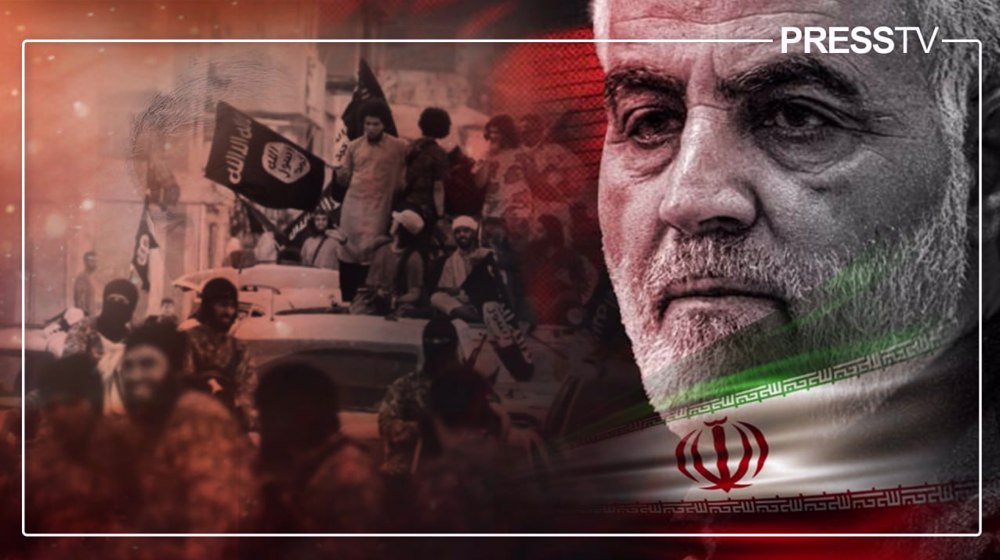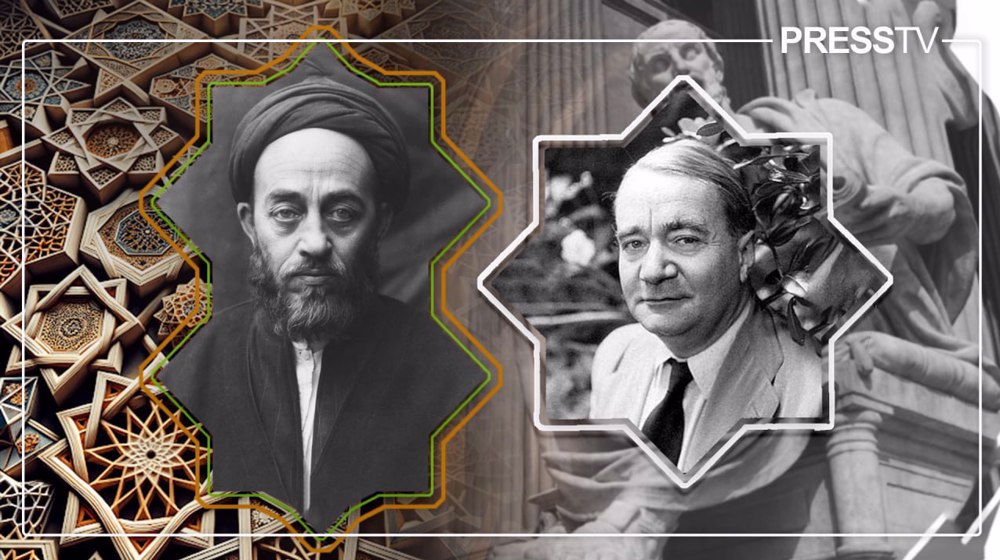42 years since Iran's President, PM were martyred in MKO bombing
By Yousef Ramezani
On Wednesday, August 30, Iran marked the 42nd anniversary of the bombing that led to the martyrdom of then-President Mohammad Ali Rajai, Prime Minister Mohammad-Javad Bahonar, and six other senior officials.
Every year, the week preceding their martyrdom anniversary is observed in the Islamic Republic of Iran as 'Government Week' as a mark of tribute to the great political leaders of the Islamic Republic.
According to eyewitness accounts, the deadly explosion on August 30, 1981, occurred when one of the victims opened a briefcase filled with explosives brought by a Mojahedin-e Khalq (MKO) terror cult agent, Masoud Keshmiri.
How did the bombing happen?
The terrorist attack took place on the afternoon of August 30, 1981, in the Iranian Prime Minister's office located on Pasteur Street in downtown Tehran.
At that time, President Rajai, Prime Minister Bahonar, and several military and security officials were participating in an extraordinary meeting.
The perpetrator, an infiltrated agent of the MKO terrorist group, masquerading as a security official, served the attendees tea and placed the briefcase containing the bomb under the table where the meeting was underway.
According to an investigation conducted later, a sophisticated bomb containing more than one kilogram of TNT was hidden inside the briefcase, similar to the Hafte Tir terrorist attack that took place two months before that.
The technical details of both terrorist attacks were discovered only later and therefore there was no possibility to prevent a repetition with adequate security measures.
After leaving the bomb device, the perpetrator exchanged a few words with Khosrow Tehrani, the head of the intelligence unit at the Prime Minister's office, then left the meeting with an excuse and headed towards Pasteur Square, where other accomplices met him and transferred him to a safe location.
According to the testimonies of survivors, the bomb exploded after one of the victims opened the briefcase. The impact of the blast destroyed the first and second floors of the building.
The explosion killed eight people and injured 23 others who were immediately transferred to hospitals. The bodies of Bahonar and Rajai were so burnt that they were later identified through their teeth, according to reports.
Who were Bahonar, Rajai and other victims?
The two most prominent victims of the terrorist attack were Mohammad Ali Rajai, the President of Iran and Mohammad-Javad Bahonar, the Prime Minister of Iran. Both of them assumed these respective positions in the same month.
Rajai, a graduate of Tarbiat Moallem University and a teacher of mathematics, was 48 years old when he was martyred. After the victory of the 1979 Islamic Revolution, he was first appointed as the minister of education, serving seven months.
Then, in the mid-1980s, he entered the Islamic Consultative Assembly (Iranian Parliament or Majles) as a representative of the people of Tehran. He held that position for fifteen months.
Rajai was also appointed as the Prime Minister and after the removal of Abolhassan Banisadr from the presidency, he was elected as the second president with over 13 million votes.
After his martyrdom, many places in Iran were named in his honor, including Teacher Training University in Tehran, a power plant in central Qazvin province, a port in southern Hormozgan province, as well as a dam in northern Mazandaran province.
Bahonar was a distinguished Islamic theologian educated at Qom Seminary and the University of Tehran, where he received his doctorate. He was 47 years old when he was martyred.
Like Rajai, after the Islamic Revolution, he held the position of minister of education and a member of parliament, representing the people of Kerman and Tehran.
He also served as the Secretary General of the Islamic Republican Party after the martyrdom of Ayatollah Hossein Beheshti, and he was also a member of the Assembly of Experts for Constitution that drafted the new Iranian constitution.
Both Bahonar and Rajai, together with the victims of the earlier Hafte Tir bombing, were buried in the Hafte Tir Mausoleum at the Behesht-e Zahra cemetery in the south of Tehran.
In addition to Bahonar and Rajai, six other people were also martyred in the blast, including the PM's chief financial officer Abdol-Hossein Daftarian and police head Vahid Dastjerdi.
What other bombings did MKO carry out?
Although no group claimed responsibility for the attack, the police investigation identified Masoud Keshmiri, an MKO operative disguised as a security official, as the perpetrator.
It came two months after the MKO terror cult targeted members of the Islamic Republican Party (IRP), the leading political party in Iran at the time, who were holding a meeting at their party headquarters in the Iranian capital.
Named after a date in the Iranian calendar (7th of Tir), the Hafte Tir bombing was one of the deadliest terrorist operations aimed at destroying the Islamic Republic through dastardly terror campaigns.
A group of more than 90 high-ranking officials, including members of parliament and cabinet ministers were listening to then-judiciary chief Ayatollah Seyyed Mohammad Beheshti's speech as he addressed a weekly party gathering.
A day before the Haft e Tir bombing, on 27 June 1981, in Tehran's Abuzar Mosque, then-Friday prayer leader Ayatollah Seyyed Ali Khamenei was injured while delivering a speech.
MKO operatives placed a bomb on a tape recorder in front of him., which exploded, severely injuring his arm, vocal cords and lungs.
The sophistication of explosives and materials used, as well as the miniaturization and skillful concealment, indicated that foreign spy agencies were also involved in these attacks alongside the MKO.
Keshmiri eventually managed to flee the country with a fake passport, while the police found, arrested and convicted several associates, and a massive deep check of all employees in state institutions was carried out.
The perpetrator's fate has never been revealed, but there are strong indications that he lived or still lives in one of the Western countries.
Yousef Ramezani is a Tehran-based strategic affairs and security analyst
Scores killed as Takfiri terrorists target Shia Muslims in Pakistan
Pezeshkian to US, Europeans: You are killing women, children
VIDEO | COP29: another climate failure?
ICC issues arrest warrants for Netanyahu, Gallant for war crimes
Israeli strikes kill 88 Palestinians in northern Gaza
American voters plainly rejected complicity in Gaza genocide: Iran FM spox
ICC should issue more arrest warrants for Israeli authorities over Gaza genocide: UN expert
Israel using AI weapons co-produced by India in Gaza genocide: Report










 This makes it easy to access the Press TV website
This makes it easy to access the Press TV website